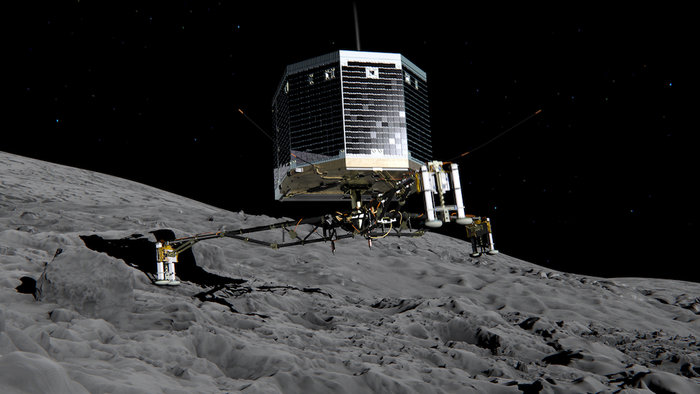Since it’s landing made international headlines back in November as it landed on Comet 67P/Churyumov-Gerasimenko, the Philae lander has been in hibernation mode, not able to generate enough power to operate due to a lack of direct sunlight on its solar panels. But after 7 months, as the comet has come closer to the Sun, the increasing solar intensity has given it the boost it needed to wake up!

“Philae is doing very well: It has an operating temperature of -35ºC and has 24 Watts available,” explains DLR Philae Project Manager Dr. Stephan Ulamec. “The lander is ready for operations.”
The most important operation right now is to ensure that the 8000+ data packets stored in the lander’s memory are sent back to Earth. This data includes telemetry and status updates from the landing, and will allow mission scientists here on Earth to decipher what happened to the lander during its descent and eventual loss of contact.
Even though the lander had been out of contact for months, the Rosetta orbiter was tuned in to listen for any signals from Philae as of March of this year. This is because the increasing solar intensity was thought to be strong enough to power the lander back to life.
Some believed that we would never hear from the lander again, and surely this was a possibility, but now that it’s slowly returning to operations, we can finally see through the lander’s mission, 20 years in the making.

2 thoughts on “Philae Lander Wakes Up After Months of Hibernation”